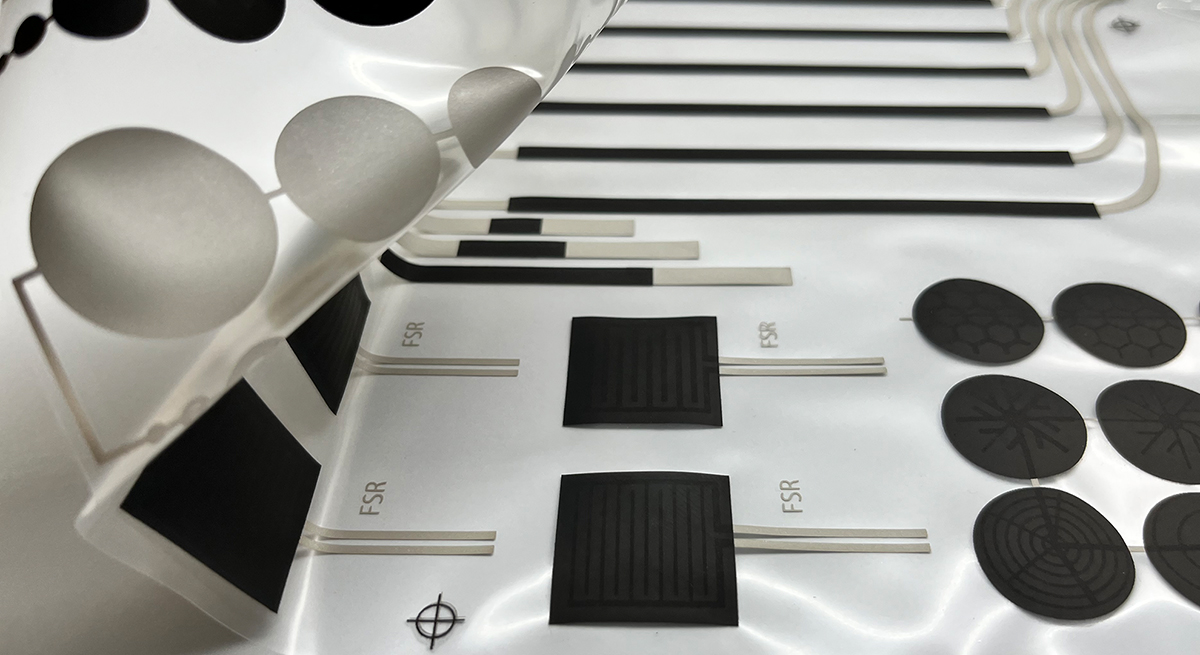The Witte Technology Sensor Series: Pressure Sensors
Pressure sensors are crucial components in the automotive industry. In every new car there are about 10 different variants that, for instance, monitor tire pressure, engine or transmission oil filling level, seat occupancy or brake pressure. Since conventional pressure sensors are based on rigid materials such as silicon and require costly production cycles, functional pressure also steps up lean and cost-effective solutions around pressure measurement of specific forces.
A sandwich structure of two polymer films, printed silver layers and FSR (Force Sense Resistor) elements enclosing a layer of air causes contact between the top and bottom layers under the effects of pressure, resulting in a measurable change in electrical resistance. Depending on the area required and the application, this sensor can be produced in variable matrices.
Alternatively, Witte also produces piezoresistive (“pressure-responsive”) sensors, printed on polymer films with a silver electrode structure, a sensitive material (piezo) and a protective layer, making even better repeatability possible. Of particular interest are, for example, the highly flexible substrates coming into play that can be used without loss of function for completely new applications.
The dynamic data of both pressure sensor variants, which are printed on PET, TPU or Kapton substrates, can be transferred completely digitally via Bluetooth or NFC using FPC or crimp connectors.
As a footprint, in saddles or as a contour on a mattress – to name just three conceivable applications – the thin pressure sensors can provide valuable measurement data of large time intervals. Their future is particularly promising for measuring fill levels, such as in warehouses or supermarket shelves. On much larger surfaces, on so-called sensor mats in buildings, train stations or public transportation, pressure sensors can digitize certain surfaces and thus people flow (“surface digitization”) with spatial resolution, thereby partially replacing cameras and helping make these places anonymously smarter with their data.


